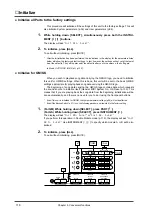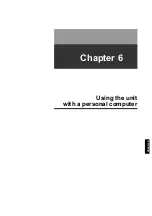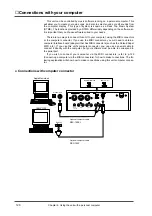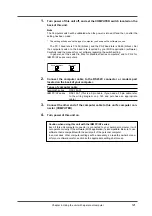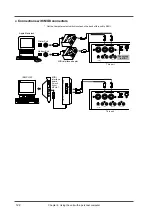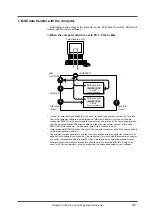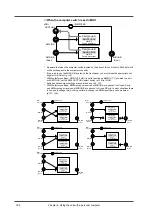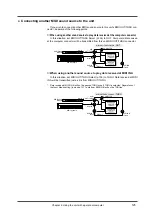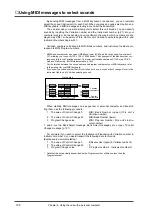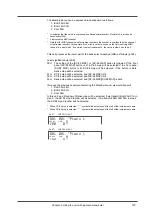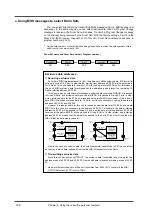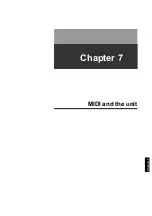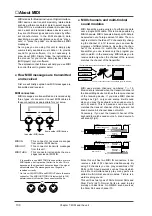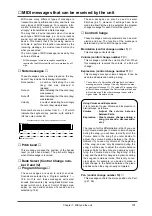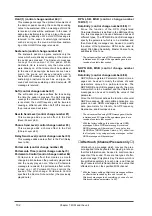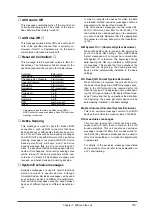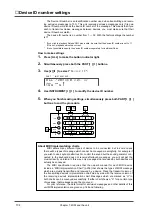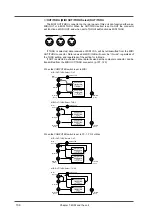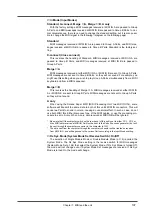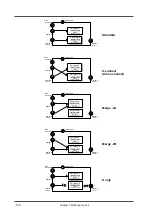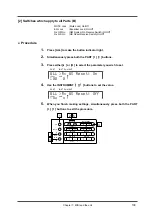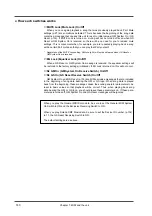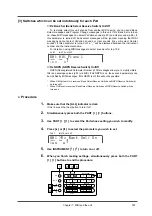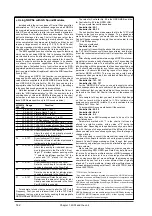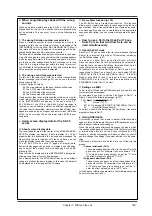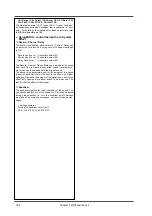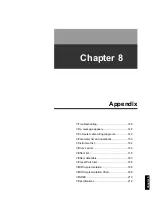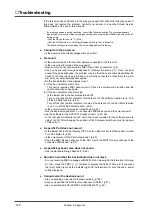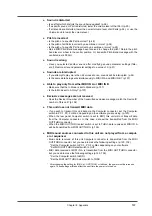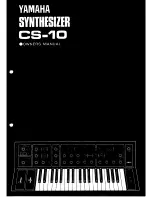
Hold (1) (control change number 64)
✩
This message conveys the up/down movements of
the damper pedal, causing the currently sounding
notes to be sustained. When a message of Hold On
is received, notes will be sustained. In the case of
decay-type instruments such as a piano, the sound
will decay gradually until a Hold Off message is
received. In the case of sustain-type instruments
such as an organ, the sound will continue sustain-
ing until a Hold Off message is received.
Sostenuto (control change number 66)
The sostenuto pedal on a piano sustains only the
notes which were already sounding at the moment
the pedal was pressed. The Sostenuto message
conveys the movement of this pedal. When
Sostenuto On is received, only the notes which
were already on at that moment will be sustained.
In the case of decay-type instruments such as a
piano, the sound will decay gradually until a
Sostenuto Off message is received. In the case of
sustain-type instruments such as an organ, the
sound will continue sustaining until a Sostenuto Off
message is received.
Soft (control change number 67)
The soft pedal on a piano softens the tone during
the time the pedal is pressed. The Soft message
conveys the movement of this pedal. When Soft On
is received, the cutoff frequency will be lowered,
causing a softer sound. When Soft Off is received,
the previous sound will return.
Reverb Send Level (control change number 91)
This message adds a reverb effect to the Part
(Reverb Level p.52).
Chorus Send Level (control change number 93)
This message adds a chorus effect to the Part
(Chorus Level p.53).
Delay Send Level (control change number 93)
This message adds a delay effect to the Part (Delay
Level p.54).
Portamento (control change number 65)
Portamento Time (control change number 5)
Portamento Control (control change number 84)
Portamento is an effect that creates a smooth
change in pitch between the previously played note
and the newly played note. When a Portamento
message is received, the portamento effect will be
turned on or off. Portamento Time controls the
speed of the pitch change. Portamento Control
specifies the Source Note number (the previously
played note).
RPN LSB, MSB (control change number
100/101)
✩
Data Entry (control change number 6/38)
✩
Since the function of the RPN (Registered
Parameter Number) is defined in the MIDI specifica-
tion, this message can be used between devices of
different types. The RPN MSB and LSB messages
specify the parameter which is to be modified, and
then Data Entry messages can be used to modify
the value of that parameter. RPN can be used to
adjust Pitch Bend Sensitivity, Master Coarse Tune,
and Master Fine Tune.
* The values modified using RPN messages will not be
initialized even if Program Change messages etc. are
received to select other sounds.
NRPN LSB, MSB (control change number
98/99)
Data Entry (control change number 6/38)
NRPN (Non-registered Parameter Number) mes-
sages can be used to modify the values of sound
parameters unique to a particular device. The
NRPN MSB and LSB messages specify the para-
meter which is to be modified, and then Data Entry
messages can be used to modify the value of that
parameter.
Since the GS format defines the function of several
NRPN messages, GS compatible application pro-
grams can use NRPN messages to modify sound
data parameters for Vibrato, Cutoff Frequency,
Resonance, and Envelope values.
* The values modified using NRPN messages will not be
initialized even if Program Change messages etc. are
received to select other sounds.
* With the factory settings, this unit will ignore NRPN
messages. After a GS Reset message is received,
NRPN messages will be received. You can also turn
Rx.NRPN on (NRPN Receive Switch, p.141) either from
the front panel or by using exclusive messages, so that
NRPN messages will be received.
❍
Aftertouch (Channel Pressure only
✩
)
Aftertouch is a message which conveys the pres-
sure applied to the keyboard after playing a note, so
that this information can be used to control various
aspects of the sound. There are two types of after-
touch message; Polyphonic Key Pressure which is
transmitted separately for each note, and Channel
Key Pressure which is transmitted as one value that
affects all notes on the specified MIDI channel.
* With the factory settings, Aftertouch messages will have
no effect when received by this unit. In order for
Aftertouch messages to do something, you need to set
Aftertouch-related parameters. (p.30).
Chapter 7. MIDI and the unit
132
Summary of Contents for SoundCanvas SC-88 Pro
Page 9: ...Chapter 1 Try out the unit Quick start Chapter 1...
Page 18: ...Chapter 1 Try out the unit 16...
Page 19: ...Chapter 2 Parts and parameters Chapter 2...
Page 47: ...Chapter 3 System Effects Chapter 3...
Page 57: ...Chapter 4 Insertion Effects Chapter 4...
Page 97: ...Chapter 5 Convenient functions Chapter 5...
Page 121: ...Chapter 6 Using the unit with a personal computer Chapter 6...

